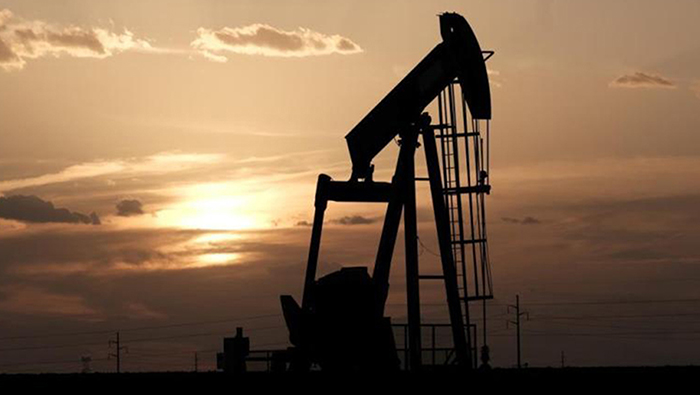
Muscat: Crude oil prices regained the $80 per barrel mark and traded at the highest level this month after seeing consistent gains last week, according to a new report.
“The gains were mainly led by supply concerns due to the tensions in the Middle East, mainly the attacks on Red Sea cargo and the retaliation, as well as the war on Gaza,” the Kuwait-based Kamco Invest said in its Oil Market Monthly Report February 2024.
“Further support came from estimates that longer routes taken by cargos by avoiding the Red Sea could marginally add to oil demand. Moreover, a forecast that showed slower growth in US crude oil output this year also supported prices,” the report further added.
On the other hand, worries that rate cuts in the US would be delayed due to higher-than-expected inflation in January 2024 dented the overall rally in crude oil prices as slower economic growth could result in lower crude oil demand. Moreover, a fall in manufacturing activity in China continued to affect sentiments in the oil market.
On the regional political front, peace talks on the war in Gaza had little progress despite efforts from various fronts. As a result, the attacks on Red Sea cargoes continued impacting global freight rates, the Kamco Invest report said.
According to a Bloomberg report, shipping rates have surged close to 200 per cent to 300 percent on some routes this year due to the attacks led by the rising cost of insurance and longer routes. The IMF also warned about the spillover effects of the attack that has affected 40 percent of commercial traffic volume passing through the Suez Canal and its impact on global economic growth.
On the demand front, the IEA said that demand growth is expected to be significantly weaker than last year, impacted by slow growth in China and the demand for electric vehicles (EVs). The agency expects oil demand growth of around 1.2 million barrels per day (mb/d) to 1.3 barrels per day this year. Meanwhile, the CEO of Saudi Aramco projected a slightly better picture for oil demand with an expected demand growth of 1.5 barrels per day. The Secretary-General of Opec also stated robust demand expectations and was relatively more positive on continued demand from China further supported by strong growth in demand from India. On the supply front, the latest forecast in the short-term energy outlook report from the US Energy Information Administration (EIA) showed a sharp fall in expected growth in oil production in the US.
The agency expects US oil output to grow by 170,000 barrels per day this year as compared to its previous growth projection of 290,000 barrels per day. The sharp decline in expected production reflects several factors including the cold weather that has limited production to 12.6 mb/d in January-2023, higher global crude oil inventories as well as limited capital investment expected from oil drillers in the US with a focus on shareholder returns as seen from recent comments from some oil drillers.
Nevertheless, North America is expected to lead crude oil production growth this year. Meanwhile, Opec oil production showed a decline during January-2024 as new production cuts were implemented as a short-term measure by the Opec+ producers.
Oil prices
The Kamco Invest report further said that crude oil futures witnessed the longest-running positive streak in five months during the second week of February 2024 with prices breaching the $80 per barrel mark after briefly trading below this level during the first week of the month. The 6.3 percent gain last week was mainly led by expectations of a tight market this year as well as fears of a supply disruption led by the conflict in the Middle East region. News that the US would not continue the pace of output growth as expected previously also supported prices. The oil rig count data from Baker Hughes showed a flattish trend over the last few weeks as the count stayed at 499 over the last three weeks until the week ended 9-February-2024. Analysts have also projected maturing shale production as one of the key reasons for the slow output growth this year.
Crude oil prices witnessed steep declines at the start of the month led by data showing faster-than-expected job creation in the US that dampened the chance of an earlier rate cut, slowing economic activity in China as well as higher crude oil inventories in the US after refinery shut down due to the cold weather. This also affected gasoline prices in the US that hovered around 3 month highs at gas stations and are forecasted to stay elevated. Data from the American Automobile Association showed gasoline prices averaging at $3.2 per barrel across the country. Refinery utilisation also dropped to around 82.4 percent in late January-2024, according to data from Bloomberg.
In terms of monthly trends, prices of almost all crude grades reported gains during January 2024 after three consecutive months of declines. Average Brent crude prices were up by 2.9 percent to reach $79.9 per barrel. The gain in average Opec reference basket price and Kuwait export grade prices was slightly smaller at around 1 percent to reach $80 per barrel and $80.8 per barrel, respectively. Meanwhile, the consensus estimate for Brent crude underwent minimal changes from last month’s forecast.
Prices are now expected to average at $82.5 per barrel in the first quarter (Q1)-2024 and show gradual growth until Q4-2024 to reach $84 per barrel. Price forecasts from the US EIA also showed minimal changes as the agency marginally lowered its forecast for Brent to $82.42 per barrel for 2024 against $82.49 per barrel in its last month’s forecast whereas the forecast for 2025 was kept unchanged at $79.48 per barrel.